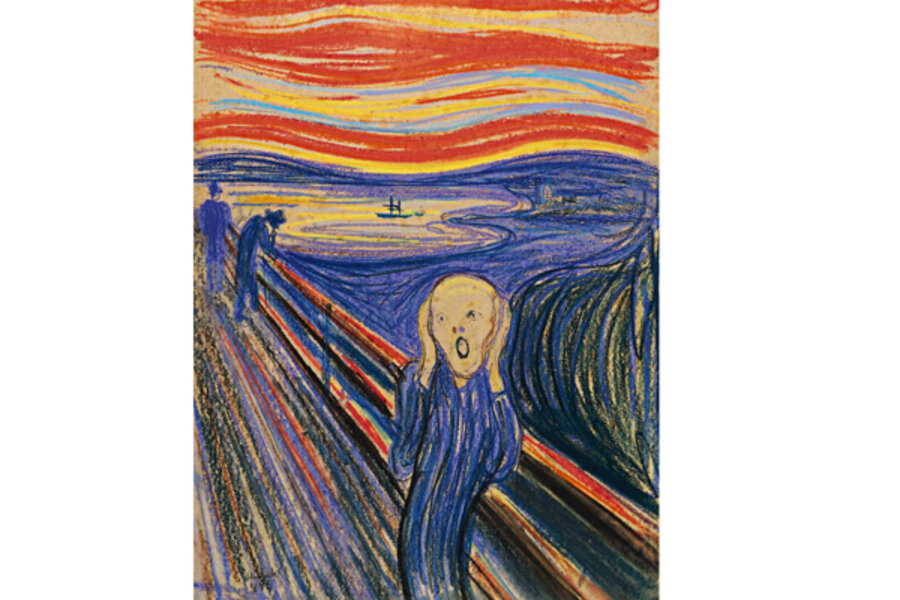Iconic ‘The Scream’ to be sold at auction. How Munch will it fetch?
Loading...
| Los Angeles
News that Norwegian painter Edvard Munch’s most famous work, “The Scream,” goes on sale Wednesday night has sent a ripple through both the art world and popular culture.
That’s because while few have ever actually seen an original (Munch created four versions), the image of a pale face gripped by both hands, emitting a soundless howl, may just possibly be one of the most well-known “high art” icons of the past century.
Reproduced everywhere from dorm posters to key fobs and tee-shirts, and referenced in films such as “Scream “ and “Home Alone,” it has come to symbolize wordless horror, personal anxiety, and existential pain.
The version on sale is the only one remaining in private hands and observers of the Sotheby’s auction have speculated it could go for as much as $80 million.
For the uninitiated – and there may still be some who have never seen even a picture of the original – this auction and the publicity surrounding the sale may introduce them to what Los Angeles art critic Edward Goldman calls one of the masterpieces of modern painting.
“That astonishing price tag will get people’s attention,” he says, adding, “this is not a bad thing. After that they may Google him. They may learn more about Munch and who knows, maybe move on to other painters.
“It doesn’t matter which door they take to enter the temple of good art,” he adds with a laugh, “as long as they come in.”
The rarefied world of collectors who can afford that sort of price tag, however, does distress him. “I am very saddened by the prospect that this work will simply surface briefly, then disappear into the private collection of some wealthy art collector, never to be seen again,” says Mr. Goldman.
A private sale would have little, if any, effect on the enduring power of the imagery, however, points out Robert Thompson, the Syracuse University popular culture expert, a reality that Munch himself might applaud, he adds.
“I doubt Munch would be rolling over in his grave at the thought that his vision is often experienced in the cramped space between a dorm bunk bed and the microwave,” he says with a laugh, noting that the artist himself not only made several versions but also created lithographs to further extend its reach.
The fact that few people have ever experienced “The Scream” as an original artwork – the three state-owned iterations reside in Norwegian museums – says as much about the modern era of art appreciation as it does the power of the imagery Munch created, points out Professor Thomson.
“This is as much about the ideas that it evokes as it is about the texture or color or even composition,” he says. The idea is as important as the execution – and can be infinitely reproduced without necessarily diminishing the power of the work to evoke a meaningful response.
Even a poor reproduction of Munch’s creation has power, points out Goldman, who says that despite the work being created in the 1890s, “it seems to embody all the horror and prejudices of the 20th century,” including two World Wars and the power of mass self-annihilation.
He notes that up until this current version surfaced for Wednesday’s auction, “it was largely known only through a black and white photograph.”
That said, the extraordinary value placed on this iteration comes from the fact that it is the only one housed in a frame painted by the artist and it is also the only version with a poem attached, explaining its origins in Munch’s experience.
He describes himself on a path overlooking the city of Oslo, with the sun setting in a blaze of red streaks through the sky, "shivering with anxiety" and feeling "the great scream in nature."
The work is being sold by a Norwegian businessman, Petter Olsen, whose father was a neighbor and patron to Munch.
Proceeds from the sale will fund a new art and culture center as well as a hotel in Hvitsten, Norway, where Olsen's father and the artist were neighbors.







